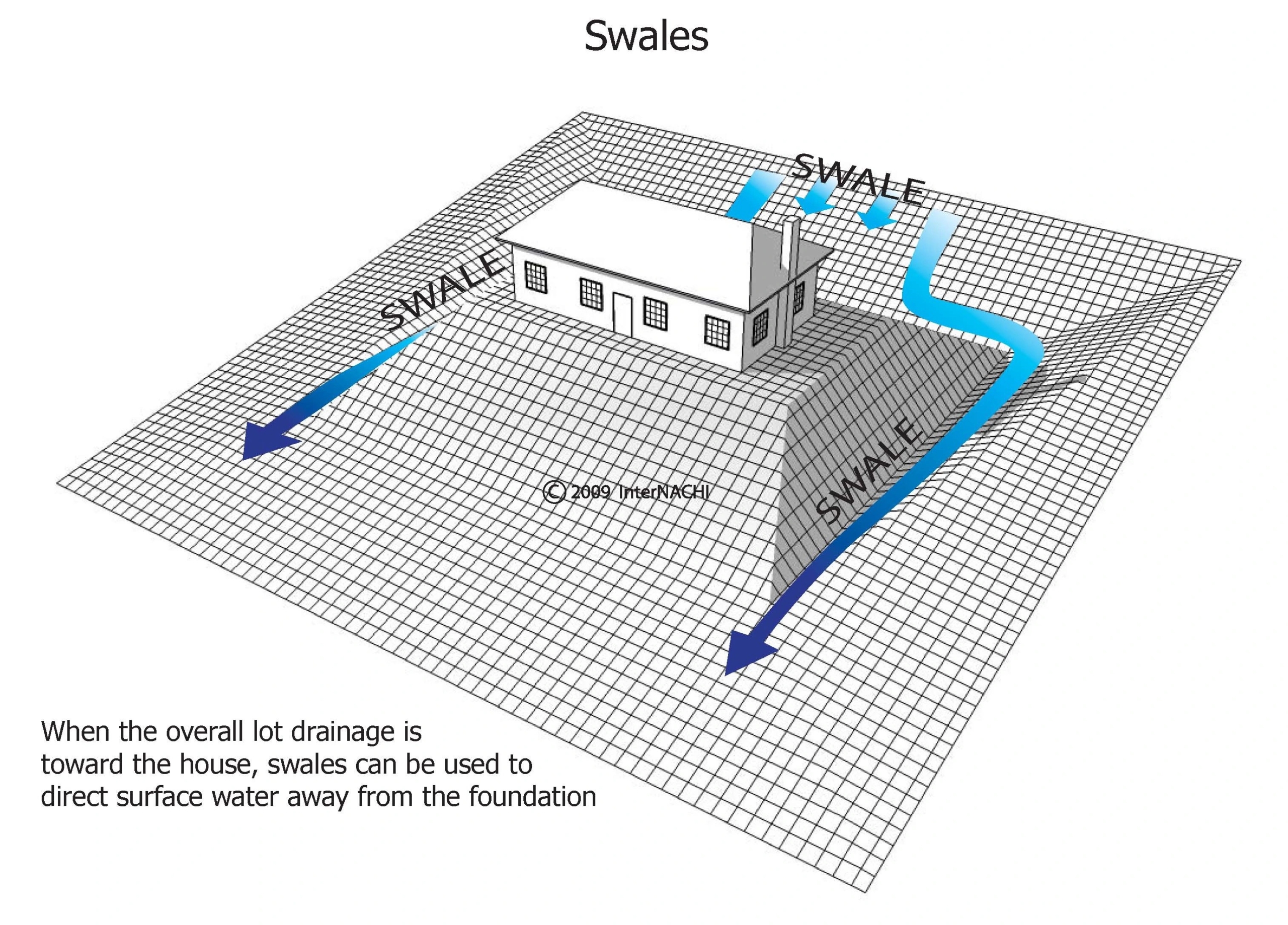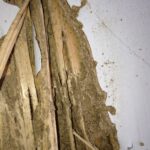Imagine stepping into your backyard after a heavy rain and finding a mini lake where your swale should be. It’s frustrating, isn’t it?
You might be wondering why your swale isn’t draining like it should. You’re not alone in this struggle. Many homeowners face the same issue, and the solution might be simpler than you think. You’ll discover the common causes behind a swale that refuses to drain properly and learn practical steps you can take to fix it.
By the end, you’ll feel empowered to tackle this problem head-on, ensuring your outdoor space remains functional and flood-free. Keep reading to unravel the mystery and reclaim your yard from unwanted water.

Credit: www.youtube.com
Causes Of Swale Drainage Issues
Swale drainage issues can be frustrating, especially when you expect them to manage water efficiently around your property. Understanding the root causes of these problems can help you address them effectively, ensuring your swale functions optimally. Let’s delve into some common causes of swale drainage issues, each bringing unique challenges and solutions.
Poor Design
One major cause of swale drainage issues is poor design. Swales need to be thoughtfully planned to handle water flow. If not, they can lead to pooling water or even flooding. Consider the slope, width, and depth of your swale. Have you ever noticed how a slight change in terrain can alter water paths? Ensure your swale design complements the natural landscape. Consult with a professional if needed to improve the design and efficiency.
Soil Compaction
Soil compaction is another culprit that can hinder proper drainage. When soil becomes compacted, it loses its ability to absorb water. This results in water running off instead of seeping into the ground. Have you ever walked on a path and noticed how hard the soil feels? That’s compaction, often caused by heavy foot traffic or machinery. Aerating the soil can improve its permeability, allowing your swale to drain more efficiently.
Clogged Swales
Clogged swales are common, especially in areas with dense vegetation or debris. Leaves, twigs, and other materials can block water flow, leading to drainage issues. It’s like trying to sip through a clogged straw – frustrating, right? Regular maintenance is key. Clear debris and check for blockages frequently. This simple task can prevent major drainage problems and keep your swale functioning as intended.
Each cause of swale drainage issues comes with its own set of challenges. By understanding these causes, you can take proactive steps to ensure your swale remains effective. What will you do to improve your swale’s drainage today?
Assessing The Problem
Swales not draining properly can lead to water pooling issues. Identifying the cause is crucial to fixing it. Consider soil compaction, debris, or improper slope as potential problems.
Assessing the Problem Discovering that your swale isn’t draining can be frustrating. It might seem like a simple fix, but there’s often more to the story. Before jumping to solutions, it’s crucial to assess the problem thoroughly. Understanding what’s going wrong is the first step to making it right.Identifying Water Flow Patterns
Begin by observing how water moves through your swale. Is it pooling in certain areas or struggling to reach the intended drainage outlet? Grab a notebook and sketch out these patterns during different times of the day or after rainfall. You might find that water is bypassing intended routes due to obstructions. To illustrate, I once noticed water accumulating at the midpoint of my swale, causing a mini-pond. This unexpected behavior led me to discover a hidden dip in the swale’s structure, disrupting flow. Could similar unseen obstacles be lurking in your landscape?Evaluating Soil Type And Condition
Soil plays a significant role in drainage. Assess whether the soil in your swale is compacted or has a high clay content. You can do a simple test by grabbing a handful and feeling its texture. Sandy soils drain quickly, while clay can hold water like a sponge. When I faced drainage issues, a simple soil test revealed high clay content. This insight prompted me to consider soil amendment options. What might your soil reveal about the swale’s drainage capabilities? Making these assessments can lead you to actionable insights. Don’t just fix the surface problem; understand the underlying causes. Once you do, the solutions become clear and effective. How will you tackle your swale drainage issue today?Improving Swale Design
Swales not draining properly need careful design adjustments. Ensure proper slope and remove blockages for better water flow. Regular maintenance can prevent water pooling and improve drainage efficiency.
Improving swale design is crucial for effective drainage and preventing water accumulation. A well-designed swale ensures that water flows properly, reducing the risk of flooding and erosion. Whether you’re dealing with a small garden or a larger landscape, tweaking your swale design can make a significant difference. Let’s dive into some practical techniques to enhance your swale’s functionality.Regrading For Better Flow
Regrading is a straightforward way to improve water movement in your swale. By adjusting the soil’s surface, you can direct water to flow more efficiently. Start by identifying low and high points in your swale. Use a simple level or string line to pinpoint areas that need adjustment. Add or remove soil where necessary to create a smooth gradient. A gentle slope prevents water stagnation and encourages continuous flow. Think about your own yard after a heavy rain. Have you noticed puddles forming in certain spots? Regrading can help eliminate these problem areas.Incorporating Correct Slopes
Correct slopes are essential for swale effectiveness. The angle of your swale impacts water speed and direction. Aim for a slope between 1% and 5%. This range allows water to move efficiently without eroding the soil. Consider using a digital level to measure your swale’s slope. This tool can provide precise readings, ensuring optimal water flow. Imagine walking through your garden and seeing water smoothly follow its path. Proper slopes make this vision a reality. Reflect on your swale’s current design. Is water escaping its intended route? Adjusting slopes can guide it back on track. Improving your swale design not only enhances drainage but also adds value to your property. Taking small steps like regrading and adjusting slopes can yield significant results. What changes will you make to your swale today?Enhancing Soil Drainage
Swales are essential for controlling water flow and preventing soil erosion. Yet, when swales don’t drain properly, it can lead to waterlogging. Enhancing soil drainage is crucial for swale efficiency. Proper drainage can prevent pooling and support healthier plant growth. Let’s explore ways to improve soil drainage.
Aeration Techniques
Aeration helps improve soil structure. It allows water to penetrate deeper. Use a garden fork to create holes in the soil. This simple method increases air circulation. It also reduces soil compaction. Aeration encourages roots to grow deeper. Healthy roots mean better drainage. Aeration is easy and effective.
Adding Organic Matter
Organic matter improves soil texture. It increases soil’s ability to hold and drain water. Compost is an excellent choice for this. Spread a layer of compost over the swale. Work it into the soil with a rake. This enriches the soil with nutrients. It also enhances its drainage capabilities. Organic matter promotes microbial activity. This further improves soil health. Consistent application yields the best results.
Clearing Obstructions
Swales may stop draining due to debris buildup. Leaves and soil can block water flow, causing overflow issues. Regular cleaning helps maintain effective drainage and prevents water damage.
When your swale isn’t draining as it should, it can lead to a myriad of problems, from waterlogging to potential damage to your property. One of the primary culprits behind this issue is obstructions within the swale. Clearing these blockages is crucial to ensure that water flows smoothly and efficiently. Let’s explore some practical steps you can take to address these obstructions and keep your swale functioning correctly.Removing Debris
Debris like leaves, branches, and litter can accumulate in your swale, creating blockages that hinder water flow. Regularly walk along the swale and inspect for any visible debris. Use a rake or shovel to remove these obstructions. You might be surprised to find what a simple cleanup can do. During one of my early morning strolls, I discovered an old soccer ball blocking the flow. After removing it, the water moved effortlessly again. Have you checked your swale for unexpected items lately?Regular Maintenance Practices
Routine maintenance is key to preventing future obstructions in your swale. Schedule a monthly inspection to ensure everything is in order. Trim any overhanging branches that could shed leaves or twigs into the swale. It’s also wise to edge the grass along the swale to prevent it from growing into the drainage area. Think of maintenance as a small investment for long-term peace of mind. Wouldn’t you prefer spending a few minutes each month over dealing with a flooded yard? By incorporating these simple practices, you can keep your swale free of obstructions and maintain effective drainage.Installing Drainage Solutions
Swales sometimes fail to drain properly. This can lead to water accumulation. Installing drainage solutions can help manage excess water. Proper drainage keeps your landscape healthy. It prevents erosion and protects your property.
French Drains
French drains are simple yet effective. They involve a trench filled with gravel. A perforated pipe is placed inside. Water flows into the pipe and away from your property. This system reduces water pooling efficiently. It works well in areas with heavy rainfall.
Permeable Paving
Permeable paving allows water to seep through surfaces. It reduces surface runoff significantly. Materials like porous concrete or pavers are used. They let water penetrate the ground naturally. This method prevents water logging. It is ideal for driveways and pathways.
Natural Solutions
Swales not draining can cause water buildup and soggy areas. Using natural solutions like native plants and porous soil can help. These methods enhance water absorption and prevent flooding, ensuring effective drainage.
When dealing with a swale that isn’t draining properly, natural solutions can make a world of difference. They not only tackle the issue effectively but also enhance the beauty and health of your landscape. You might wonder, can nature itself be the answer to water management problems? The good news is, it absolutely can!Planting Water-absorbing Vegetation
Water-absorbing plants can be your first line of defense against drainage issues. These plants soak up excess water and prevent pooling. Think about the vibrant colors and textures they can add to your garden. Consider options like willows and cattails which thrive in wetter conditions. Their deep root systems help break up compacted soil, improving drainage naturally. Imagine walking through your garden and seeing these robust plants thriving, knowing they are working hard to manage water effectively.Creating Rain Gardens
Rain gardens are like mini ecosystems designed to absorb and filter rainwater. They can be an appealing addition to your yard, transforming a problem area into a lush, functional space. Select native plants that are adapted to your local climate and soil conditions. These plants are usually more resilient and require less maintenance. Picture a garden that not only handles excess rain gracefully but also attracts butterflies and birds. Have you ever considered how a rain garden could be a conversation starter? Neighbors might be curious about this unique landscape feature. It offers you the chance to share your experiences and inspire others to adopt natural solutions. Wouldn’t it be satisfying to turn a drainage problem into an opportunity for community engagement? By using these natural solutions, you’re not just fixing a swale; you’re enriching your environment. Which strategy will you try first?
Credit: www.inspectionworks.ca
Monitoring And Adjustments
Swales are essential for effective water management in your landscape. They help prevent flooding and soil erosion. Sometimes, swales may not drain as expected. Regular monitoring and making necessary adjustments is crucial. This ensures that your swale functions efficiently.
Regular Inspection
Check your swale regularly. Look for any signs of blockage. Debris like leaves and twigs can hinder water flow. Ensure the swale’s slope is correct. A flat swale may not drain properly. Inspect after heavy rains. Water should flow smoothly without pooling.
Adapting To Seasonal Changes
Seasons change. So do the needs of your swale. In spring, melting snow can increase water flow. Ensure your swale can handle this surge. In fall, falling leaves can cause clogs. Remove them promptly. During winter, ice can form. This might obstruct drainage. Check your swale for ice build-up.

Credit: www.reddit.com
Frequently Asked Questions
Why Is My Swale Not Draining Properly?
Clogged pipes or compacted soil can block water flow. Check for debris or plant roots obstructing the swale.
How Can I Fix A Blocked Swale?
Clear debris and unclog pipes. Consider reshaping or regrading for better water flow.
What Are Common Swale Drainage Issues?
Poor grading, debris buildup, and compacted soil are frequent problems. Regular maintenance prevents these issues.
How Often Should Swales Be Maintained?
Inspect swales seasonally. Clean and remove debris to ensure proper drainage and prevent blockages.
Can Plants Help Swale Drainage?
Yes, native plants stabilize soil and improve water absorption. Choose plants that thrive in wet conditions.
Conclusion
A non-draining swale can cause problems. Waterlogged soil and plant issues arise. Regular maintenance helps. Clean debris and check for blockages often. Ensure proper slope for drainage. Consult experts if problems persist. Effective swale care prevents flooding. It keeps your landscape healthy.
Addressing issues promptly saves time and money. A well-maintained swale enhances your property. Stay proactive for lasting solutions. Keep your swale in top shape. Your landscape will thank you.





